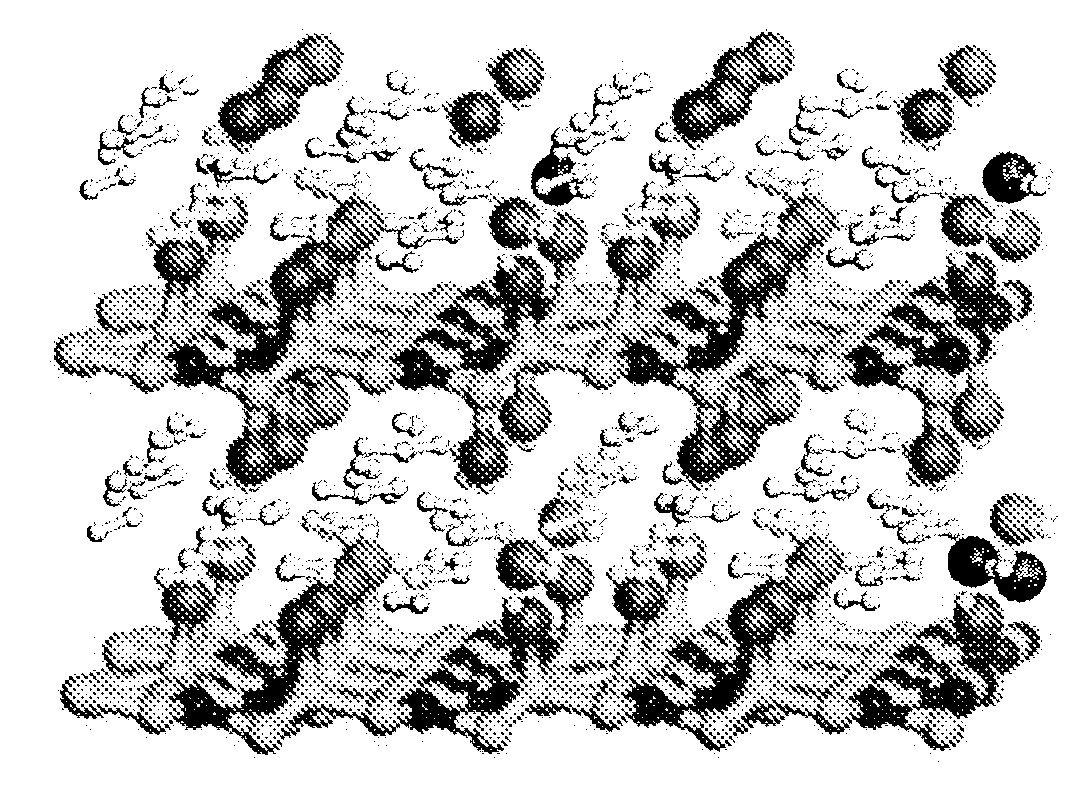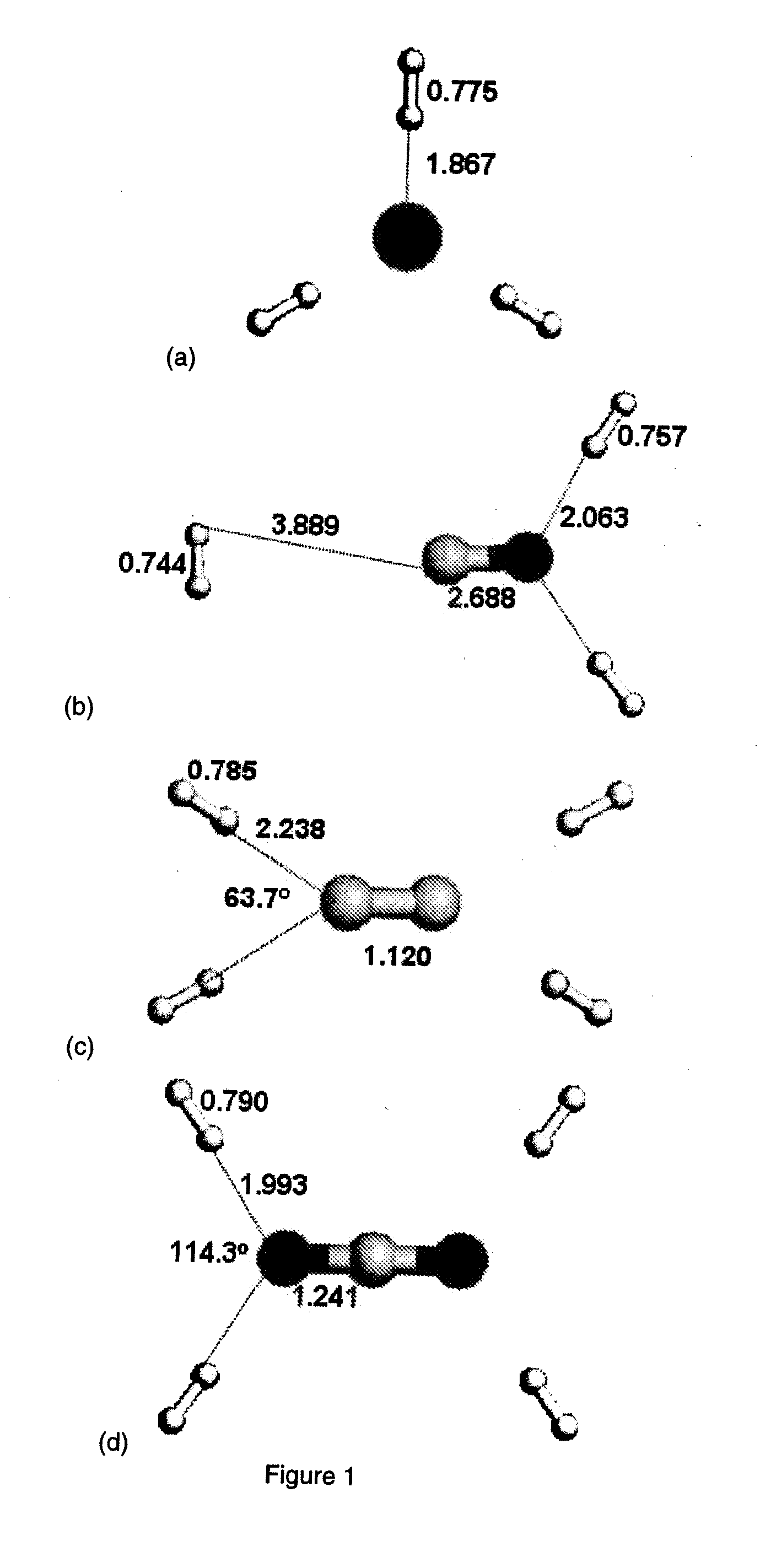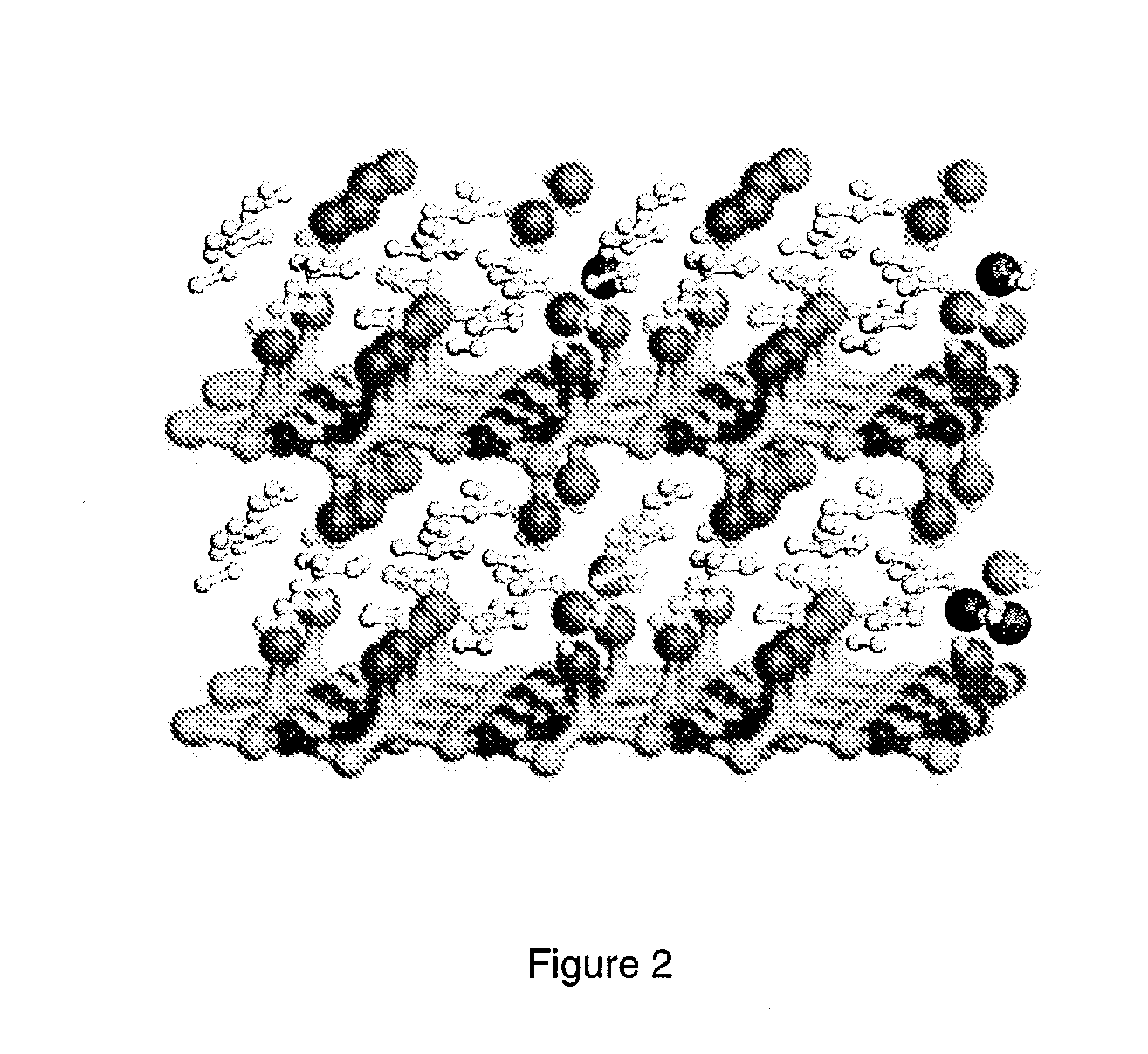Hydrogen storage with graphite anion intercalation compounds
a graphite anion and hydrogen storage technology, applied in the preparation of carbamic acid derivatives, chemistry apparatus and processes, organic chemistry, etc., can solve the problem of insufficient hydrogen storage at near ambient temperatures, significant higher cost of delivered gas, slow refilling time, etc. problem, to achieve the effect of increasing distance, high charge-to-volume ratio, and enhancing interaction
- Summary
- Abstract
- Description
- Claims
- Application Information
AI Technical Summary
Benefits of technology
Problems solved by technology
Method used
Image
Examples
example 1
Calculation of Hydrogen Interactions with Anions in the Gas Phase
[0043]To ascertain the interactions between H2 and the anion intercalated graphitic compounds, we calculated the interaction energies between H2 and gas phase anions. FIG. 1 illustrates the fully optimized structures of H2 adsorption on the anionic species calculated at the B3LYP / 6-311++G** level. Table 2 lists the calculated H2 adsorption energies obtained at various levels of theoretical methods. The basis set superposition error for H2 interaction with F− calculated with the counter poise method accounts for less than about 0.1% of the interaction energy and is thus negligible in this case. In the optimized structure for hydrogen interacting with cesium fluoride, two H2 molecules are associated with the F ion and one H2 is associated with the Cs+ ion.
TABLE 2Table 2. The calculated average H2 adsorption energy on fully optimizedanionic species(unit: kcal / mol H2) for a variety of computational methods.B3LYP / CCSD / B3LYP...
example 2
Calculation of Hydrogen Interactions with a Nitrogen Containing Graphite Fluoride Intercalation Compound
[0044]The unit cells selected to simulate H2 adsorption in the nitrogen containing graphite fluoride intercalation compound were first fully equilibrated with and without adsorbed H2 molecules. FIG. 2 illustrates the optimized unit cell of C24N8F8H48, containing 24 molecules of adsorbed H2. The fully optimized unit cell parameters obtained from the calculations of hydrogen interactions with the nitrogen containing graphite fluoride intercalation compound C24N8F8 are shown in Table 3.
TABLE 3Table 3. The calculated unit cell parameters for the nitrogen containinggraphite fluoride intercalation compound (C24N8F8),the nitrogen containing graphite fluoride intercalation compoundwith 12 H2 / unit cell (C24N8F8H24),and the nitrogen containing graphite fluoride intercalationcompound with 24 H2 / unit cell (C24N8F8H48).abcαβγC24N8F89.5309.5184.41089.890.3123.2C24N8F8H249.5869.5935.90190.190.21...
example 3
Calculations of Hydrogen Interactions with a Graphite Fluoride Intercalation Compound
[0047]The unit cell selected to simulate H2 adsorption in the graphite fluoride intercalation compound of formula C32F8, which does not contain nitrogen, was first fully equilibrated with and without adsorbed H2 molecules. The formula and unit cell was chosen for providing a comparison with the nitrogen containing graphite fluoride intercalation compound C24N8F8, with the N atoms being replaced with carbon atoms. The optimized unit cell parameters obtained from the simulations of H2 adsorption in the graphite fluoride intercalation compound of formula C32F8 are shown in Table 4.
TABLE 4Table 4. The calculated unit cell parameters for the graphite fluorideintercalation compound with 12 H2 / unit cell (C32F8H24),and the graphite fluoride intercalation compound with24 H2 / unit cell (C32F8H48).abcαβγC32F8H249.7349.7346.55689.789.9120.2C32F8H489.7389.7387.71390.189.9119.5
[0048]The calculated average total el...
PUM
| Property | Measurement | Unit |
|---|---|---|
| Pressure | aaaaa | aaaaa |
| Pressure | aaaaa | aaaaa |
| Percent by atom | aaaaa | aaaaa |
Abstract
Description
Claims
Application Information
 Login to View More
Login to View More - R&D
- Intellectual Property
- Life Sciences
- Materials
- Tech Scout
- Unparalleled Data Quality
- Higher Quality Content
- 60% Fewer Hallucinations
Browse by: Latest US Patents, China's latest patents, Technical Efficacy Thesaurus, Application Domain, Technology Topic, Popular Technical Reports.
© 2025 PatSnap. All rights reserved.Legal|Privacy policy|Modern Slavery Act Transparency Statement|Sitemap|About US| Contact US: help@patsnap.com



